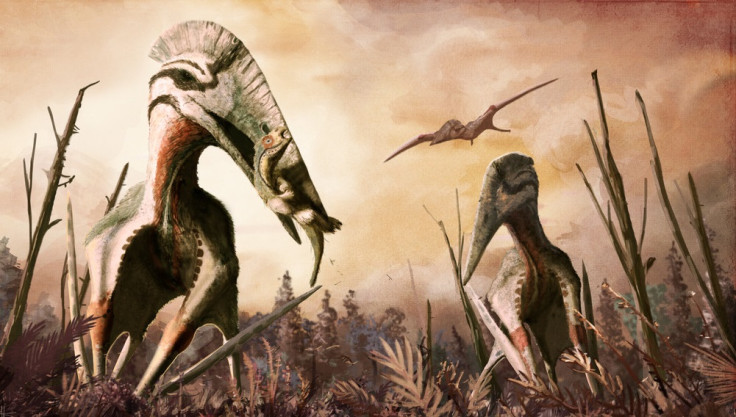These 70 million-year-old remains may belong to the largest flying animal ever discovered
Researchers estimate that the fearsome predator had a wingspan of up to 36 feet.

The remains of a huge pterosaur, which was likely one of the largest animals ever to fly, have been found in the Gobi Desert in Mongolia.
Researchers estimate that the fearsome beast, which lived 70 million years ago, could have had a wingspan of up to 36 feet – comparable to some of the largest ancient flying reptiles and even some small aircraft.
Because of its size, it's possible that the giant carnivore may have eaten juvenile or small dinosaurs – which were common during this period. Its ability to walk using all fours would have helped in this respect, allowing it to stalk its prey on the ground.
While the fossils have not been identified as a new species because the skeleton is so incomplete, researchers say it was probably one of the largest pterosaurs that ever lived – perhaps standing as tall as a giraffe – and certainly the largest found in Asia.
"Although fragmentary, the specimen is from a gigantic individual... extending the geographic range of gigantic pterosaurs to Asia," the researchers write.
Their findings are published in the Journal of Vertebrate Paleontology.
Two previously discovered large pterosaurs – Quetzalcoatlus and Hatzegopteryx - probably had wingspans of 32 and 36 feet respectively.
Palaeontologists from the Mongolian Academy of Sciences first discovered fragments of a large vertebra in 2006 in an area of the western Gobi that is rich in fossils. The bone was sent to the University of Tokyo for further analysis before a re-examination of the site uncovered more remains, although many of the bones were broken into many small pieces.
After years of trying to piece the remains back together, the researchers were left with several backbones resembling those of a mysterious group of pterosaurs known as azhdarchids.
A large azhdarchid found in Jordan, known as Aramabourgiania, had neck bones measuring more than two inches wide. In comparison, the neck bones of the newly discovered specimen are nearly eight inches across.
"Whether that equates to a totally new size class of pterosaur is another question," Mark Witton, a pterosaur expert, told National Geographic. "What we don't have for these pterosaurs is the association of the neck bones with the body to confirm whether they just have much bigger necks, or whether they are much bigger animals."
Despite the lack of evidence, Witton thinks, they most probably had large wingspans which would be pushing the physical limit for flying in an animal of this size.
"It might have been this quite robust, formidable predator" capable of catching prey as large as a human. "They seem to be feeding on things on the ground and are generalist in their ability to grab basically whatever they can fit in their beaks."
The Gobi pterosaur lived at the same time as Tarbosaurus, a 5-ton relative of T. Rex, so it would not have been the top predator in the food chain, although it was probably not in much danger itself. Palaeontologists think that azhdarchids had the ability to launch themselves into the air in a matter of seconds.





















